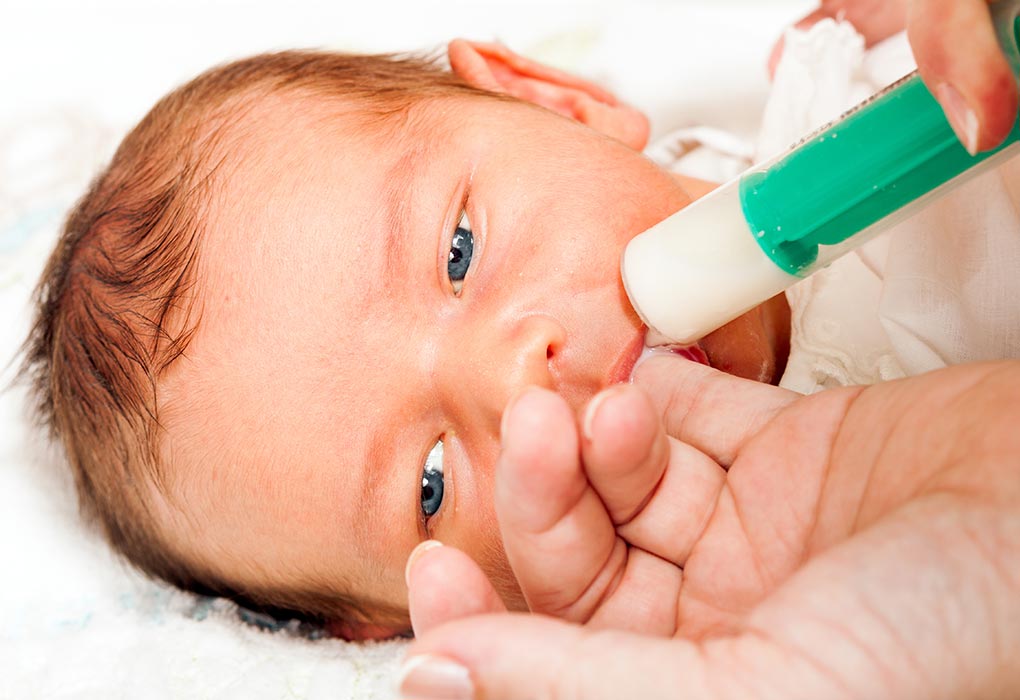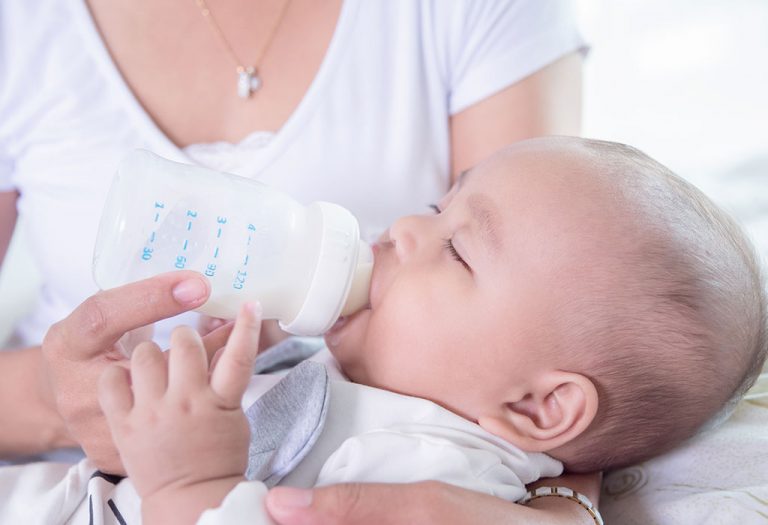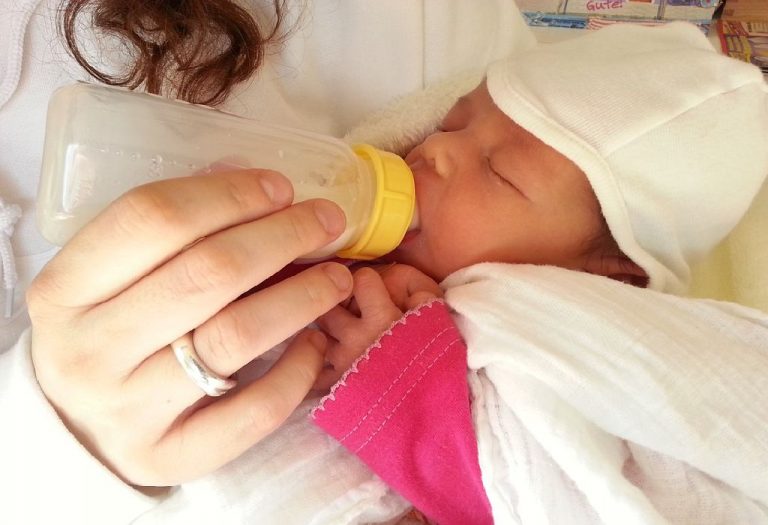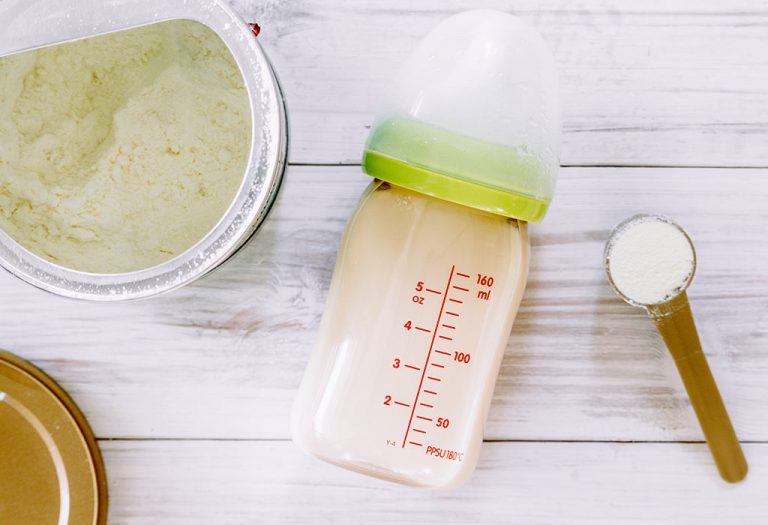How to Feed a Baby with a Syringe?

Once your little baby arrives in the world, you will be more than excited to breastfeed them and take care of them. However, there might be conditions that might not make it easy for the baby to be breastfed. At times, you may require additional time to recover, or your breasts may be too sensitive or sore and may require rest, thus, preventing you from breastfeeding your baby. This is where feeding the baby with a syringe might need to be undertaken.
But what does it mean by syringe feeding baby, and how to do it? In this article, we will explore the ways to do so. Let’s read below.
What Is Syringe Feeding?
We all know that a baby should be breastfed for the first six months, but in certain scenarios, it may not be possible for a mother to breastfeed her baby. Therefore, a baby may need to be fed expressed breast milk or formula directly in his mouth through a syringe without a needle. Such a feeding technique is termed syringe feeding.
When Does Syringe Feeding Take Place?
Here are some cases in which syringe feeding takes place:
- If a preterm baby has poor primitive reflexes.
- If the baby is drowsy due to labour-inducing drugs.
- If the baby is recovering from birth interventions.
- If the baby is born with medical conditions or congenital disabilities, such as cleft lip or cleft palate
- If the baby is unable to latch on the breast temporarily.
- If the mother is unable to feed her baby immediately.
How to Feed a Newborn With a Syringe?
Before going ahead with using a syringe to feed your newborn baby, it is important that you follow a few steps. Breast milk can usually be given directly with the syringe. However, when preparing formula milk, do stick to the instructions on the package but make sure it is fluid enough to pass through the syringe.
- Wash and clean your hands with soap and water.
- Prepare the formula or breast milk in a cup or a bowl.
- Using a sterile or clean syringe, pull the plunger to fill the syringe with milk.
- Position your baby appropriately on your lap. Make sure they is slightly inclined in an upright position.
- Securely hold and cradle your baby as you find a comfortable position. Feel free to use a pillow to support your little one.
- Gently nudge the baby to open their mouth with the tip of the syringe. When they does, insert the tip of the syringe inwards.
- Position the syringe between the gum and the cheek of the baby.
- The baby will latch on to the tip. Once they do, start pushing the plunger in a gradual way, staying in sync with their sucking action.
It might take a few tries to get it right. In case you continue to face problems feeding your baby the right way or he doesn’t seem to drink enough milk, get in touch with your doctor or any consultant for help.
Tips and Precautions for Syringe Feeding a Breastfed Baby
At times, your baby might be feeding off your breast but not in the quantities he should. In order to supplement his nutrition, you can make use of syringe feeding by either using your expressed breastmilk or formula. Here are some tips that will help you syringe-feed your baby:
- Keep the amount in tandem with breastfeeding.
- If your baby starts feeding on the breast for a longer duration, ask your doctor for the right time to cut down on supplemental feeding.
- If the tip of the syringe is uncomfortable for the child, you can attach a fine tube to the tip of it. This can be slid into the baby’s mouth, which they can suck on easily.
- If syringe feeding fails, it is best to resort to bottle feeding or a cup to keep the baby’s nutritional intake on the right path.
- Use your little finger to open the baby’s mouth.
- Do not place your baby flat in your lap while feeding, as it may cause them to choke.
FAQs
1. Which Is Better – Syringe Feeding Or Bottle Feeding?
Using a syringe for feeding premature infants can be more advantageous than bottle-feeding due to its lower risk of infections. It may also help prevent nipple confusion, a common issue in preterm infants fed with bottles. Additionally, syringe feeding promotes increased parental involvement, which can benefit the infant’s well-being.
2. What Alternative Feeding Methods Are There?
If a baby cannot breastfeed for any reason, alternative methods such as syringe feeding, hand feeding, bottle feeding, cup feeding, and spoon feeding can be used.
For most women, especially first-time mothers, the act of feeding breast milk with a syringe can feel weird and even saddening. The experience of having your baby feed on your breast is what constitutes the very experience of motherhood. However, prioritising your baby’s safety and needs is important. Over time, you might find an opportunity to get him back onto your breast.
References/Resources:
1. Birgül Say, Mehmet Büyüktiryaki, Nilüfer Okur, et.al; Evaluation of Syringe Feeding Compared to Bottle Feeding for the Transition from Gavage Feeding to Oral Feeding in Preterm Infants; jpedres.org; https://jpedres.org/archives/archive-detail/article-preview/evaluation-of-syringe-feeding-compared-to-bottle-f/27897; September 2019
2. Breastfeeding; WHO; https://www.who.int/health-topics/breastfeeding#tab=tab_1
3. Using a Syringe to Feed Your Child Formula or Breast Milk; seattlechildrens.org; https://www.seattlechildrens.org/globalassets/documents/for-patients-and-families/pfe/pe1234.pdf
4. No bottles, please!; childrensmd.org; https://childrensmd.org/browse-by-age-group/newborn-infants/no-bottles-please/
5. Finger Feeding Vs Syringe Feeding in the NICU; lacted.org; https://lacted.org/questions/0216-finger-feeding-vs-syringe-feeds-nicu/
Also Read:
Finger Feeding a Baby
Age Wise Guide to Feeding Your Baby
Breastfeeding vs. Formula Feeding

















